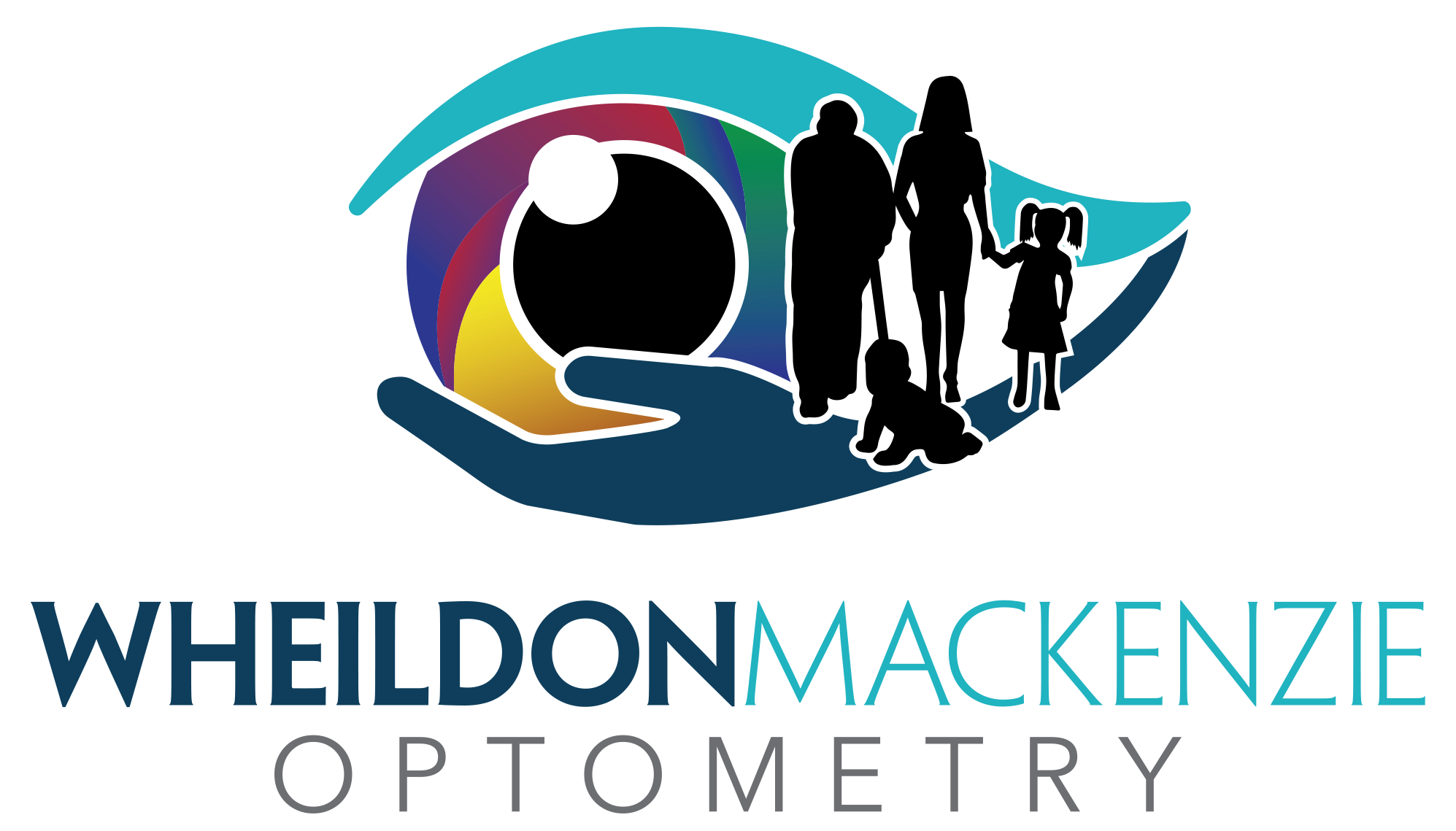What is the difference between an optometrist, ophthalmologist and an optician?
An optometrist is the primary health-care provider for vision and eye health concerns. An ophthalmologist is the secondary-level health-care provider, such as surgeons and specialists in eye disease. Opticians are the third member of the eye care team and are trained to fit and adjust vision aids based on the prescription of an optometrist or ophthalmologist.
How often should you have your eyes examined?
This depends on age and overall health.
The Canadian Association of Optometrists recommends that children should have their first eye exam between 6-9 months old.
Wheildon MacKenzie Optometry then recommends yearly exams following the initial exam. Children are covered through OHIP for a full comprehensive eye exam once a year.
The Canadian Association of Optometrists recommends for ages 20-64 to have a full comprehensive eye exam every two years. Unless you have an underlying health condition or eye condition that should be monitored yearly. Examples would be diabetes, cataracts, glaucoma, macular degeneration or retinal condition. There are certain medications that can cause eye health and vision problems that should also be monitored yearly.
For ages 65 and older it is recommended to have a full comprehensive eye exam once a year. This age group is covered through OHIP for a full comprehensive eye exam once a year. As we age, our risk of developing eye health conditions increases. This is why yearly exams are recommended for early detection of problems.
What are comprehensive eye exams?
Comprehensive eye exams include various procedures to determine a prescription for eye glasses or contact lenses. They may include patient history, visual acuity measurements, colour vision evaluation, binocular vision and/or eye health assessments, neurological assessments and/or refractive correction.
Is my eye examination covered through OHIP?
OHIP (Ontario Health Insurance Plan) offers coverage for optometry services, although some services are not covered by OHIP. Please click on the link below for current information and to find out more details about your coverage options.
What do I do in an emergency?
Is there something in your eye? Experiencing Red eye or have an eye infection? Are your contact lenses causing irritation, pain or other problems? Do you have eye pain?
If you are experiencing any of the above, please contact our office immediately and we will accommodate you.
How do the eyes and visual system relate to the body as a whole?
A comprehensive eye exam can do more than test your vision. A number of potentially life threatening health conditions, such as diabetes, thyroid disease, tumours, high blood pressure, can be detected through a comprehensive eye exam.
What is the Eye See… Eye Learn Program?
The Eye See... Eye Learn® program is designed to detect, diagnose and treat children with vision problems when they begin junior kindergarten, so that every child can see and learn to the best of his/her ability.
The eye exams are covered by OHIP when you provide your child’s valid health card.
If the child requires glasses, then a complimentary pair will be provided by the Ontario Association of Optometrists’ exclusive industry partners and the participating optometrist.
For those JK students starting in September, this program runs from July 1 to June 30.
Health Vision Checklist
Make sure you are keeping up-to-date with your vision care. It is important to get annual eye exams, wear sunglasses to protect against UV exposure, learn how to avoid common sources of eye injury and maintain overall health of your eyes.
Sun Protection for your Eyes
Wearing sunglasses isn't just for fashion! Make sure your sunglasses have 100% protection from both UVA and UVB rays that can cause cancer, cataracts, abnormal growths, macular degeneration, sunburn and wrinkles.
More Questions
Click on the link below to view more frequently asked questions. These responses are answered by Optometrists part of the OAO, but you can contact us directly if you have other questions that are not listed here.
Still have a question?
If you did not find your answer, please send us your question and we will get back to you!

